

Projects
Green Trail (1995) – Construction of a trail with stairs, benches, and small information desks. The length of a trail was 2 miles, there were 12 stops with theme excursion and educational activities, including activities adapted for different ages. The main idea of a trail – to organize watching of water-birds, especially cranes, without disturbing. The trail comes on a slope, so birds are not disturbing because people are on a higher level and seems less dangerous than on the edge of a marsh. Visitors get an opportunity to observe birds closer that earlier. The project sponsored by ISAR Foundation (USA). For 1995, about 120 school-children were trail visitors.

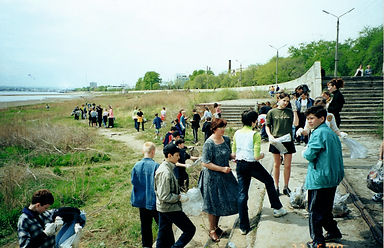
Clean Up Day (2000) - This project, sponsored by MATRA program of Netherlands Embassy in Moscow, began from series of meetings with school-children in six schools and members of non-governmental organizations related to the healthy lifestyle. Two main topics of those meetings were Garbage Pollution and Recycling. In May of the same year, we organized Clean Up Day with the participation of that school-children and NGOs. This action had been conducted on the bank of the Amur river, which was very polluted by garbage in the central part of the city. The total amount of the participants of this action was about 600, including more than 30 participants who just walked on the bank and also asked for gloves and plastic bags and began to help us. All local media reported about this action for a week, and it influenced on local administration. The local administration didn’t help us in the organizing of this action, but, based on our experience, they began their own one called “Clean City” next year and made it annual.
Green Kindergartens (2000-2001) – Planting flowers, bushes, and trees on territories of those kindergartens where it was a minimum of green plants. The project involved about 100 participants, mostly students of Geography and Biology Departments, and conducted in two summers in five kindergartens. This project was also sponsored by MATRA program of Netherlands Embassy in Moscow.
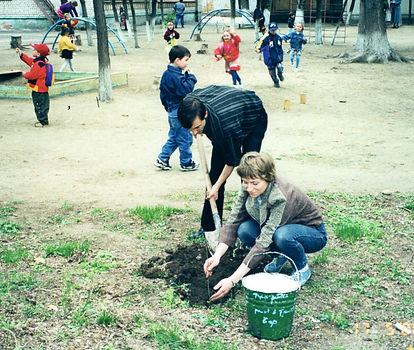
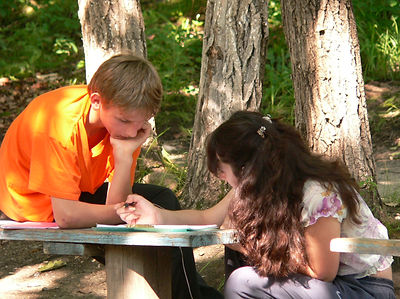
School Students for Environment (1998-2008) – This long-term work devoted to small projects of students’ groups of the University High School (Lyceum). We helped as advisors, consulting on each problem and proposing how to do project better. The main goal of each project was to make a field research on a certain topic. Groups of two or three students conducted interviews, measured certain parameters of an urban and natural environment, evaluated effects and consequences of certain processes, and realized some ways of environmental problems’ solving. For instance, our students implemented projects on topics such as “Ecotourism Development in City Suburbs”, “Fish Sale on the Street”, “Christmas Tree in a Pot”, “Pollutants of Chigirinski Reservoir”, “Dust in the City”, “Fast Food and Health”, “Music and Health”, “Earth Day”, “Recreation Loads in Natural Sites”, and other topics.
Ecotourism as an Alternative (2009) – Nine field trips and ecological demo-tours with environmental educational activities for students of International Business and Tourism Department of the Amur State University, for members of regional non-governmental organizations, and staff of regional tourism agencies, to the four natural site with different types of landscapes and tourism development issues. During demo-tours, we proposed an excursion program with adapted content, and some practice tasks and games. Also, we published 4 kinds of brochures devoted to tourist sites of our region.
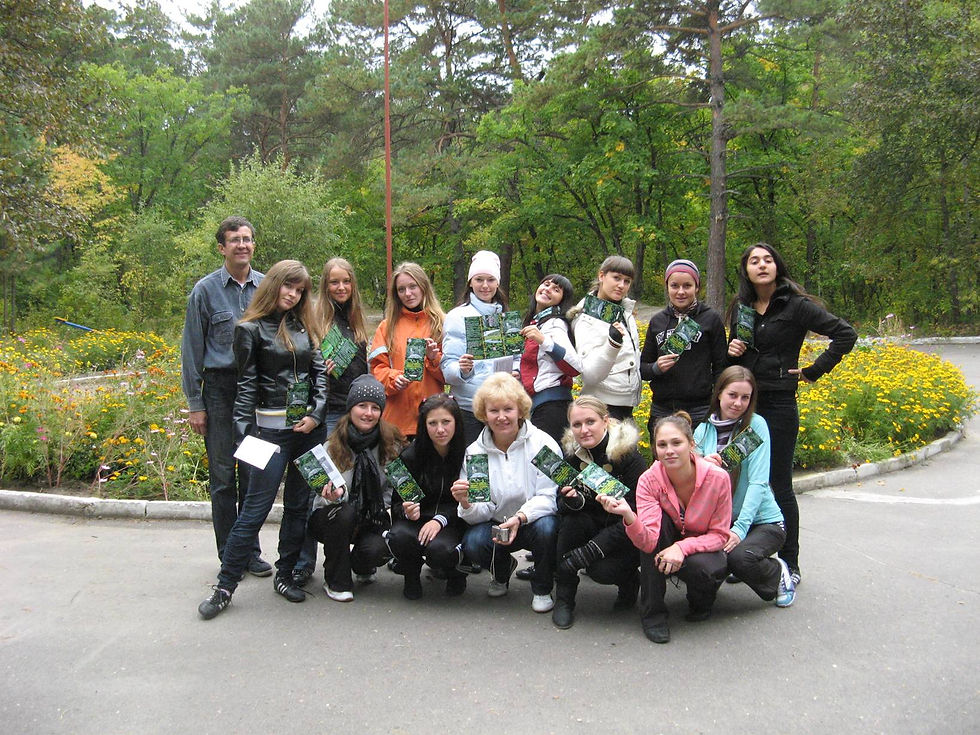
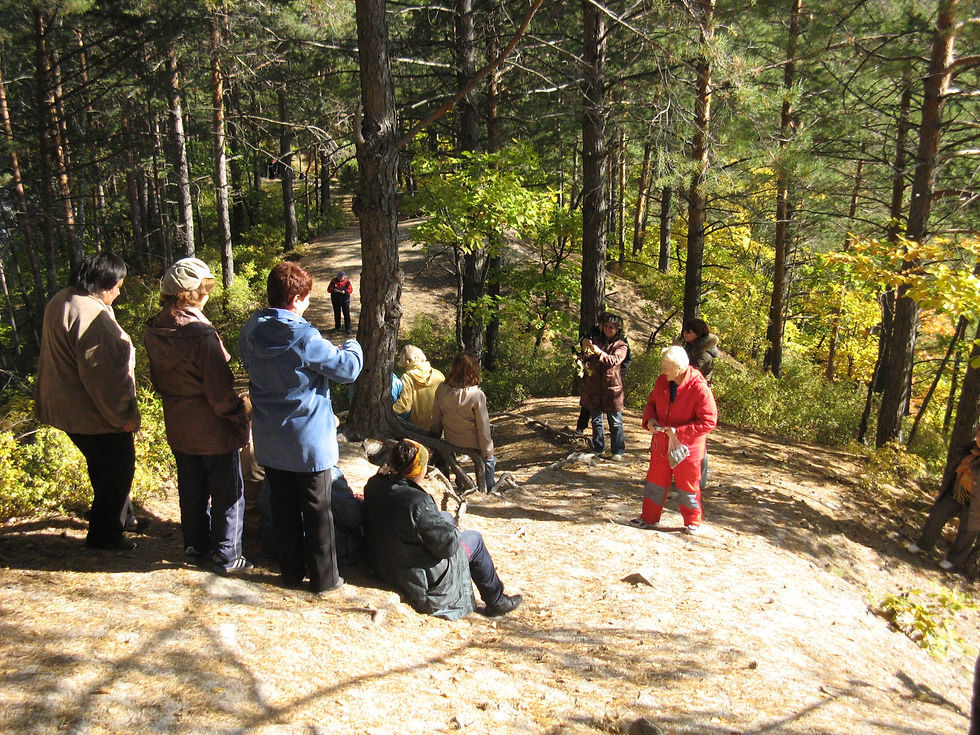
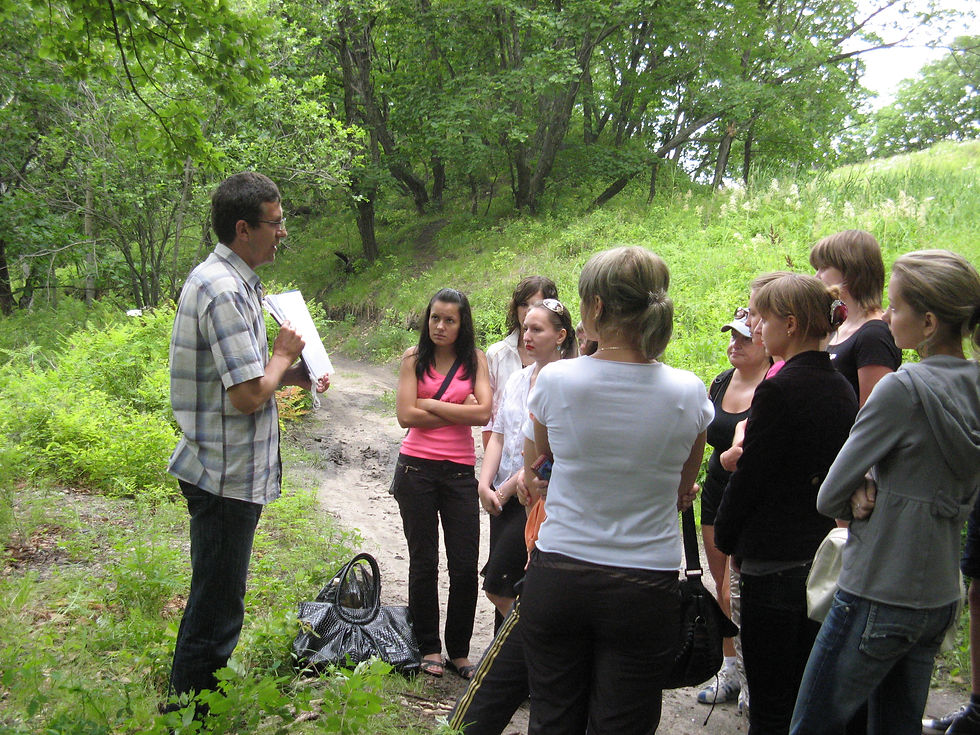





Birdwatching Eco-Lodge (2016-2017) - Construction of small cabin in natural site with a lot of field and forest birds. Eco-lodge is a summer cabin with opportunities to come there in spring and fall. The roof of the cabin opens, so visitors who are inside may stay on the roof level and watch in binoculars. For the successful realizing of this project, we planted some berry bush around and put some wood bird-houses on surrounding trees. Recently we connect with Wild Bird Societies and Birdwatching organizations in the USA and Europe to invite visitors to our Eco-Lodge. Also, we tell about this site and birdwatching opportunity on the regional level to attract visitors from surrounding areas.
Proposed Actions
Actions described below are common in many countries. But we tried to add small details and points of view that given to participants to form their special perception of a process and effect from it. Also, these actions added by some bio-technical decisions that can be significant for their effectiveness. We would love to share these small details in following descriptions.
Planting Trees
Planting trees, which is very common in many regions, is the easiest way to implement this action. We tried to plant some rare and relict ones for our region, but before it, there was a small research that answered to an important key question: why they are initially rare in a landscape? In most cases, there are a few natural spots where they can survive, because of their strong requirements for micro-climate and soil humidity conditions. By finding spots with same conditions, a naturalist can organize planting of rare and relict trees that definitely will survive there. It would be very valuable to learn how to grow up seeds of these rare trees, what conditions we should need for it. This action educated what trees are unique to the region and why, and what should we do for their reintroduction.

Planting Berry Bushes
Planting berry bushes would be organized by using the same principle as mentioned for trees above. There are about 5-15 species of berry bushes that can grow up in special micro-climate conditions, and it will be effective to plant those species in found spots, simultaneously telling about their value for the natural environment and their right to survive.
No doubt, another goal of planting berry bushes is to help birds’ populations to grow up and to attract birds in certain forest spots, for their comfortable life, for observations, and for fighting with forest pests!
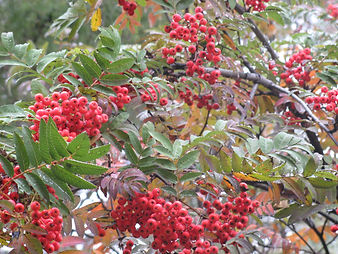
Preventing Forest Fires
Fire is a big problem in a mixed forest with intensive bush vegetation and small trees tier. Even if fire comes from the field, it goes up very quickly and devastating a forest from grass to trees’ crowns. Naturalist should explain common reasons of fires in the certain forest, accenting that certain percentage in a region belongs to fires from lightning and that most fires, however, are human-made. In accordance with this fact, naturalist tells about agricultural field fires and propose an action - to make fire-defending stripes on the forest edge. By using trimmers and taking out some tall grass from the forest edge, participants defend a forest from field fires that are very common for agricultural lands.

If it is possible, it will be more effective to use a tractor that will plow an edge of a field, so this defending stripe will be much wider and longer. Taking into account, that almost half of human fires are forest campfires left by tourists in dry weather, naturalist explains and demonstrate how to avoid this - how to equip fireplace, how to use water to stop the fire on the fireplace and so on. Actually, these measures wouldn’t save a forest from every fire, because it depends too much on a density of vegetation that varies from one season to another, from air humidity and wind speed. However, participants will learn about reasons of fires, about measures of fire prevention, and about according safe behavior in a forest.
Making and Installing Wooden Bird Houses
Experience and statistics of this action show that only 20-25% of wooden birdhouses had been inhabited, despite according to all rules of its making and behavioral birds’ features. The key detail - where it should be set. As higher on a tree as possible, and as far from people as possible. Setting birdhouses is a good way to help birds, but it’s not a good way to attract birds in gardens. They will not like it!

Making and Installing Platforms
for Large Birds
Large birds like eagles, condors, storks have large nests. Even smaller ospreys, falcons, magpies have relatively large nests. However, in some places, there are not so many trees that would be convenient for nesting. That is why in many areas we can see nesting platforms installed by people for helping rare species to nest, for example for eagles and storks. Our experience of installing such platforms showed that less than half of installed platforms were used by birds in five years, because some platforms were installed not far from human infrastructure (although we saw stork nests on electricity lines before), and because of fires that disturb birds from the area, and they do not come back in there after fire because of absence of food. So, if this action will be implemented, conditions mentioned above must be taken into account.


Monitoring of Birds
Students and adult visitors often are ready to help in monitoring of plants and animals. Although it is very important to have reliable results of such research as in any research work. Most of birds and mammals are very scaring when seeing people and try to hide, run, and fly away before you see it. It makes a monitoring work very difficult to be reliable. That is why we organized monitoring of birds in the hidden landscaped canopy on the edge of the forest, so birds wouldn’t see participants. Another feature based on knowledge from wetlands with a small hill on the edge. When people walked or stayed on a hill slope, water birds didn’t scare. But when somebody went down to the level of wetlands, all birds around were scaring and flying away. So if organizing on a slope like this, we would take this feature to our attention as well.
And one more thing about monitoring and research of birds in general. It wouldn’t be a good idea to involve volunteers when monitoring of nesting activity of species. It is widely known that many birds can abandon their nest with eggs or even chicks when seeing people around just once. That is why researcher of nesting period must have some special experience and skills. According to our experience, the best time for public monitoring of birds is their pre-migration or after-migration period when they collect on fields and crowns of trees being ready to fly for wintering, or just arrived from their wintering places.
Recordings during monitoring must include not only place, species of bird, and their amount, but also what did they do at that moment in details, did they have any seasonal features in their plumage and behavior, connected to migration, nesting, or breeding. Behavior that is connected to birds’ adaptations to the natural environment, also would be a good object of such research.
Cleaning Up a Forest from Garbage
Forests are suffering from plastic garbage pollution as much as rivers or wetlands. It is very important to take the garbage out from forest to avoid further tourists’ intentions to litter plastic on trails, to teach participants of an action how harmful can be garbage for the natural environment, and to clean forest even for a while!
Organizing this action, we gave out gloves, large and strong plastic bags, and made a discussion about dangerous kinds of garbage such as oil tanks, even empty ones, batteries with acid, different kinds of organic trash. We didn’t take out organic trash hoping that it will dissolve in a soil soon, and because of a danger of bacteria on it.
Technical organizing of group include small but very important rules:
1. Every small group of 5-6 people goes with an experienced leader, volunteer or teacher who can advise anything about possible different kinds of garbage that will be found;
2. It will be better to separate garbage during it’s collecting, like every member of a small group has his/her own specialization: plastic, glass, metal, and so on.
3. If it will be necessary, leaders of small groups plan their diffuse crossing through the forest having a forest map. They plan it for maximum involving of forest sites into the action.
After this action, leaders discuss with participants, what kinds of garbage did they found, did they found something unusual, and what should we do to buy less “garbage” (it means food packs made from plastic and plastic bags that become a garbage very fast)